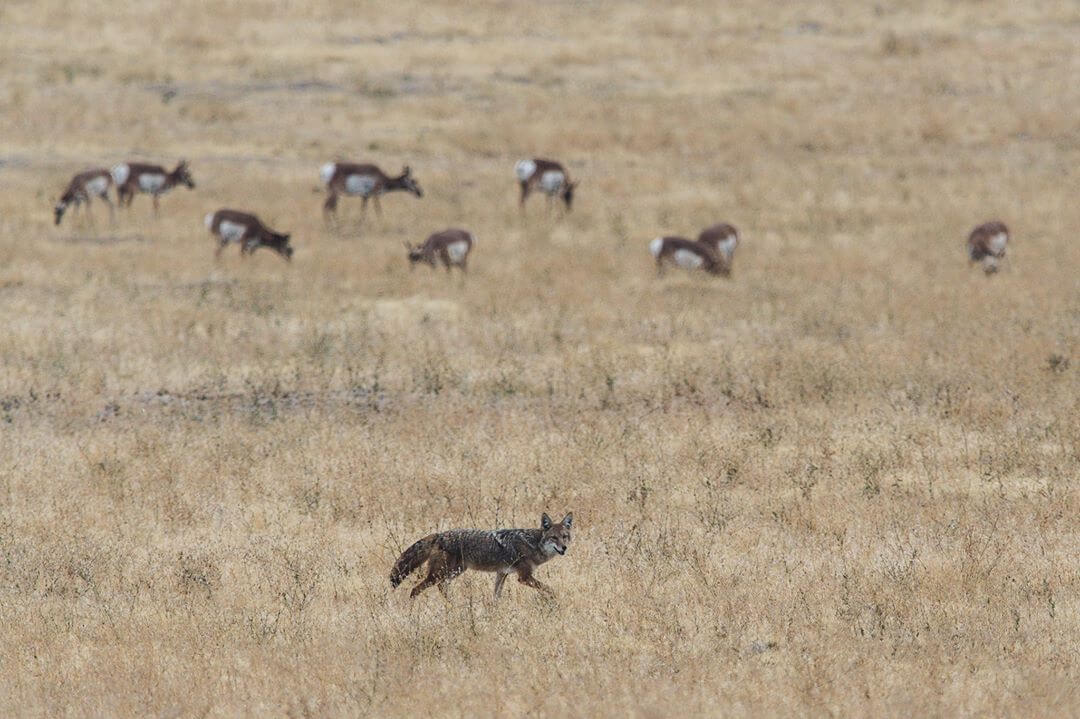Coyote Hunting Part 4

It's been awhile since we did our coyote hunting series, so I thought we'd take a chance and entertain one of the taboo topics of coyote hunting...The Rules of Coyote Hunting! Let's go.
The only rule of coyote hunting that anyone ever needs to remember is a very simple one...There are no rules to coyote hunting. While this may sound misleading, it's something that will inevitably help you in the long run. There are many different guidelines that you can use to help yourself make decisions when it comes to stand selection, call selection, optics selection or even caliber selection. Whether it's the best caliber to use, what call to use, what sound to use or where to setup on the first stand, the only certainty is uncertainty.
If you have never been humbled by a coyote, then you haven't hunted them long enough. You can be told 1,000 times that a coyote will always circle down wind and take that for gospel. Next thing you know, you'll have a coyote come barreling in up wind and blow right by your call and never even give it a second look and have you sitting there wondering what just happened because that goes against the golden rule. The very next stand you go and sit on stand and have coyotes come in downwind of a guy sitting there smoking who smells like he took a bath in cologne and shoot them with no problems. Why did this just happen? I mean, again, it goes against everything that you've been told and thought was one of the golden rules.

What about the guys that tell you "rabbit distress" is the only way to call coyotes? Sound selection is one of those things that you'll get answers from all over the board. Generally, as I've explained before, you have coyote vocals and prey distress. Which ones do you use? Well, that depends on the coyotes, the time of year and what calls you have at your disposal. Does fawn distress work in November? Some people would laugh at you and others will tell you that they've had success using this sound year-round. So, what do you do? Like I said, uncertainty is the only certainty in predator hunting. Trial and error makes up 99% of the hunting that we do. Eventually you will get to the point that you create a pretty solid baseline of expectations based on what you're doing, but that's about it. I think a lot of it boils down to a couple of general key points:
1. How educated are the coyotes you're calling
2. How often is the property hunted
Even this really is debatable to some degree. Personally, I have hunted the same property 3 times in a week and killed a double, a triple and a double from the same spot in the field using the same calling sequence. I've also hunted less than a few miles from that spot and called and not seen a coyote in the field for 3-4 months before killing a double out of it. Why? I don't really know...that's part of the uncertainty of using coyote calling sequences in the day or at night. You go to the stand knowing it's been blank for 3-4 months and get that shock of seeing 2 running in.
These articles and this series exist for people who want to learn. I still learn every single stand that I make, whether it's something to do or something not to do, it's still learning. The moment you stop learning is the moment you know everything about the subject and I just don't believe that exists yet in predator hunting. We can all have guidelines to use and the more success and failures that we share, helps to form those guidelines, however, the frustrating and also exciting part of it is that there will always be those exceptions to the "coyote hunting rules" that keeps us on our toes.







